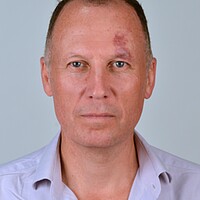Migration crisis balloons in northern Italy as other EU nations close borders
Loading...
| Como, Italy
Surrounded by beech forests and craggy mountains, it was described by William Wordsworth as a dream-like place of “chestnut woods and garden plots of Indian corn tended by dark-eyed maids.” It has long been a playground for the rich and famous.
But Lake Como, in Italy’s far north, has unwittingly become the unlikely new flashpoint in Europe’s migration crisis.
With France and Austria tightening controls on their respective borders with Italy, migrants and refugees trying to reach the wealthier countries of northern Europe recently tried to open up a new route north, from Lake Como into Switzerland.
But the Swiss, in their turn, have now sharply increased controls on their border, stopping and sending thousands of migrants back to Italy. The town of Como, which sits on the shores of the lake of the same name (see map here), is now a bottleneck for refugees whose dreams of traveling north to countries like Germany and Britain have been thwarted.
Moreover, it is a highly visible microcosm of a migration emergency that is testing Italy to its limits. While the migrant crisis in Turkey, Greece, and the Balkans has eased, with the Balkan route to Germany shut down and 55,000 refugees languishing in camps in Greece, the emergency in Italy has only grown worse.
Stalled by the lake
Some 400 to 500 refugees have for the past month been living rough outside Como’s railway station and in a nearby park.
As sunshine filters through pine trees, they lie on blankets and sleeping bags, wash their clothes in a fountain, play football on a dusty patch of ground, or simply sleep the long summer days away.
Their blankets and meager possessions, packed into black plastic bags and cheap backpacks, stand in stark contrast to the elegant town houses, pleasure boats, and outdoor cafes of Como town just a few hundred yards away.
Many of the people appear to be genuine refugees, rather than economic migrants. The majority encountered by the Monitor were Sudanese, Eritrean, and Ethiopian, fleeing war, civil conflict, and repression by brutal regimes.
“The situation is really bad here. We sleep on the ground, there is not much food,” says Abubakar Ahmed from Eritrea. “I tried two times to cross the border on the train but I didn’t make it. We will all try again.” A former taxi driver, he hopes to claim asylum in northern Europe. “Switzerland, Germany – I don’t mind where.”
Italian police and soldiers patrol the platform of Como station, stopping migrants trying to board trains for the Swiss town of Chiasso, a short ride away. The few migrants who manage to evade the Italians are invariably caught by Swiss border guards and sent back.
In July, more than 8,000 were intercepted and returned to Italy – double the number of the month before.
So far this year, nearly 100,000 migrants and refugees have arrived on Italian shores, after being rescued in the Mediterranean in boats and dinghies organized by smugglers on the Libyan coast. Cities and towns across the country are struggling to accommodate them, with spaces in reception centers running out.
In Rome, migrants sleep outside around the city’s two big train stations, while in Genoa, they wander the streets and port aimlessly, to the consternation of many residents.
In Milan, where more than 3,300 migrants are sleeping on the streets or in temporary accommodation, the city council announced plans to convert an old barracks into a huge reception center.
“The barracks is a solution that will allow us to accommodate the migrants in a dignified way,” said Beppe Sala, Milan’s mayor. “We can reassure the people of Milan that migrants won’t be left wandering around the city.”
'It’s desperate'
While the refugees in Como are stuck in limbo, so too are hundreds of others on Italy’s border with France.
The French have tightened border security since last month’s terrorist attack in Nice, on the French Riviera, and the border between Italy and France is now all but closed to migrants and refugees. That has left hundreds of them stuck in Ventimiglia, the nearest Italian town to the border.
Around 700 migrants – all men – have been rounded up and accommodated in an abandoned railway yard on the outskirts of the town, where they live in mobile cabins run by the Red Cross.
Despite the presence of French gendarmes and soldiers patrolling the border a few miles away, many are still determined to try their luck getting across the frontier.
“I know the border is closed, but we will escape,” says Salah Malik, a university graduate from Sudan. “It won’t be difficult for me, I will walk. We are Africans, we are used to walking,” he adds, smiling.
A short distance away, around 100 women and children are accommodated separately in the church of Sant’Antonio, after the parish priest decided to throw open its doors two months ago.
Mothers sleep on camp beds or sit in the shade while small children giggle and shout “Ciao!” as they hurtle around a courtyard on bikes and scooters.
“Every day, the numbers increase,” says Father Rito Alvarez, who hails from Colombia. “Our volunteers do their best but we are just not prepared for this situation. It’s desperate and a solution needs to be found by the authorities.”








